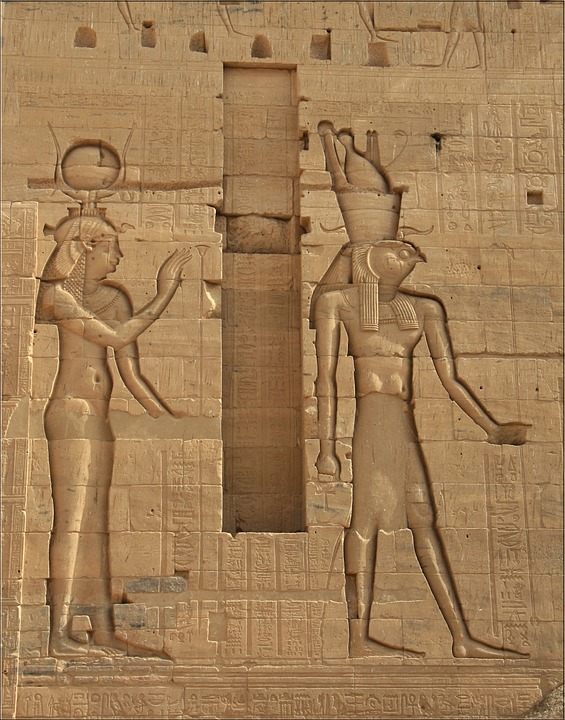Title: Pyramids and Pharaohs: A Glimpse into the Technological Marvels of Ancient Egypt
Introduction:
Since the dawn of time, humanity has looked up to the ancient pyramids of Egypt in awe. Created over 4,500 years ago, these incredible structures have piqued our curiosity, sparking countless theories and hypothesis over the years. Join us on a journey as we explore the fascinating world of ancient Egypt, shedding light on the pyramids, pharaohs, and the technological prowess of a civilization that has laid the foundation for some of humankind’s greatest achievements.
The Pharaohs: Kings that Ruled an Empire
Central to the story of ancient Egypt were the pharaohs – the political, military, and religious leaders who commanded an empire from their ascendance to the throne until their death. Adored as gods incarnate, these rulers led a structured society that embraced everything from agriculture to construction, medicine, and religion.
What better way to cement a pharaoh’s legacy than with a pyramid as a final resting place? The most iconic pyramids, located on the banks of the Nile River in Giza, hold proof of a civilization’s dedication to its ruler’s sanctity.
The Pyramids: Architectural Marvels Of Their Time
Calling into question the Great Pyramid of Khufu, often considered as the ‘Greatest Architectural Marvel’ and the oldest human-made wonder, the pyramids appear to be near-perfect structures boasting intricate internal layouts and passageways. Considering Egypt’s rudimentary tools and resources, how did they manage to construct these architectural masterpieces?
The answer lies in a combination of factors: strategic understanding of geometry, religious beliefs, and practical engineering. The pyramids were not constructed using any lifting device but instead by an army of strong men carefully placing enormous stones in meticulous layers. The precision with which these pyramids were anchored to the ground is staggering, as they have remained undisturbed by the passage of time and erosion for over 4,500 years.
Also, the Egyptians possessed a profound understanding of astronomy and aligning their pyramids with celestial objects, demonstrating their advanced mathematical and engineering skills.
The Technological Triumph: Engineering Marvels and Ingenious Methods
The ancient Egyptians employed sophisticated engineering methods, such as leveraging the force of gravity, using inclined planes, and building canals to transport materials. To transport the colossal stones used in pyramid construction, they incorporated the natural features of the surrounding area, specifically the Nile River.
One of the techniques discovered on the ground surrounding the pyramids was the use of post-and-lintel construction that supported the weight of the stones above it. This method involved creating a large base that distributed weight evenly across the ground, allowing the massive structure to balance itself.
The conclusion of this construction method, along with an ancient ramp system, ensured that pyramids stood the test of time, overcoming changes in climate and geological shifts that would have otherwise led to their collapse.
Ancient Egyptians: Crafters of Masterpieces
The construction of the pyramids reflects the extraordinary craftsmanship and innovation of their architects, engineers, and workforce—a testament to their enduring legacy. As farmers during the Nile’s flood season, they were not pauper laborers but rather trained builders who devoted themselves tirelessly to the task.
From the labor to the process of construction, the pyramids stand as a marvelous achievement of engineering, offering valuable insights into the culture, religion, and lifestyle of ancient Egypt.
FAQs:
1. What were the main materials used in building the pyramids?
The primary building material for the pyramids consisted of limestone blocks, while the outer layer was covered in polished white Tura limestone.
2. Why did the ancient Egyptians build pyramids for their pharaohs?
The pyramids were intricately linked to the Egyptians’ religious beliefs, especially the journey of the soul into the afterlife. The pyramid structure symbolized a stairway to heaven for the pharaoh, who was considered a demigod by the people.
3. How were the stones transported to the pyramid sites?
The majority of stones came from nearby bedrock quarries, using simple tools for fissuring. Boats and sledges played a significant role in transporting these blocks from the quarries onto the construction site.
4. What purposes did the chambers inside the pyramids serve?
Apart from serving as the burial place for the pharaoh, the burial chambers also contained valuable treasures, furniture, food, and offerings meant to sustain the pharaoh in the afterlife.
Image: Generated Image
Pyramids of Giza: A Beacon of Ancient Egyptian Ingenuity
As we revel in the impressive tales of pharaohs and pyramids, we can only imagine the dedication, precision, and ingenuity required for such a monumental undertaking. The pyramids stand not just as a testament to the grandeur of ancient Egypt but also as a silent reminder of human potential for wildly ambitious and technologically advanced achievements.
In the end, we are left marveling at the sheer enormity of the pyramids, the hidden chambers within, and ultimately, the technological marvels of ancient Egypt.



